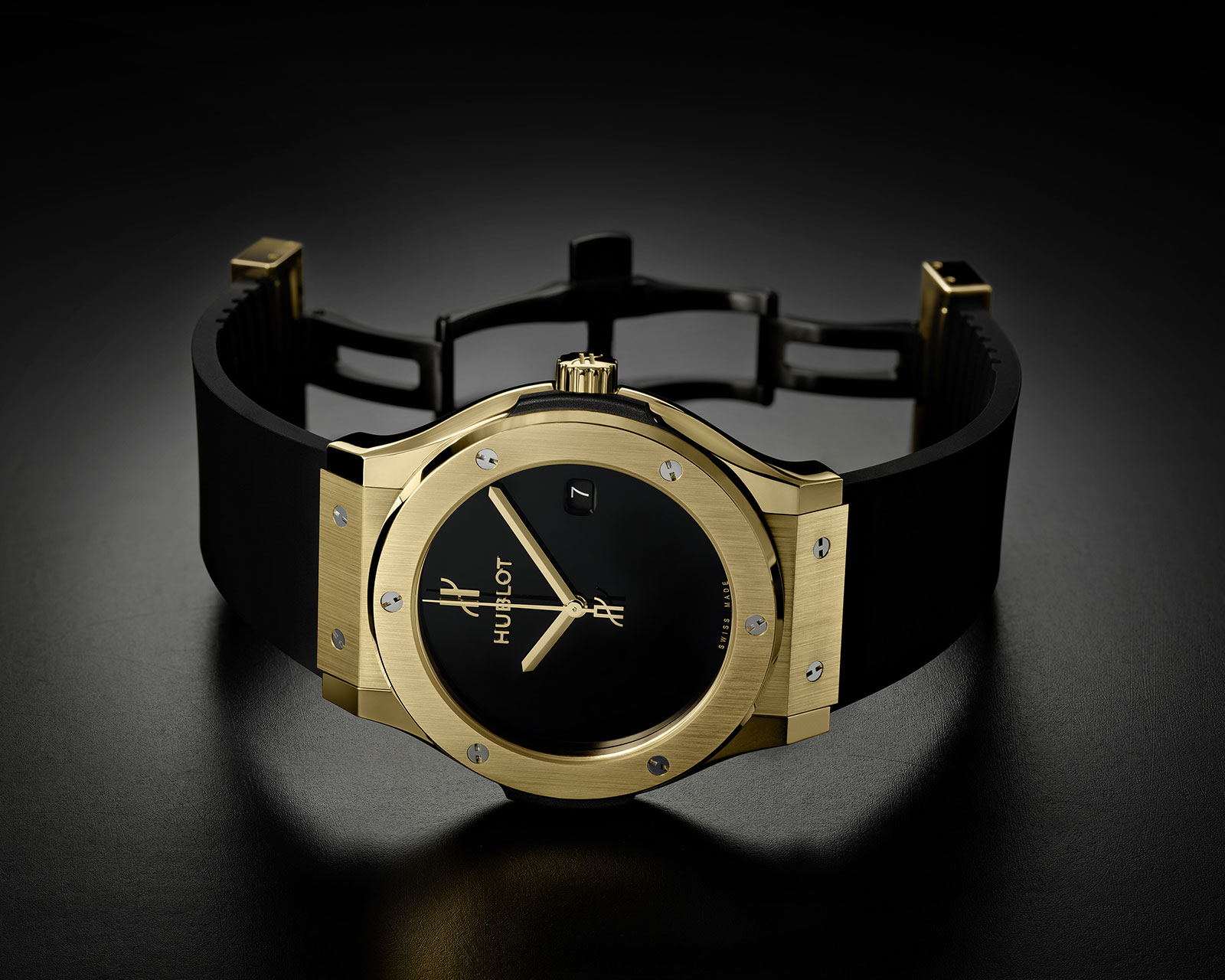Hublot Introduces the Classic Fusion 40 Years Anniversary
A return to minimalism for its birthday.
Originally just a model name for the bestselling watch of the brand MDM (short for Montre des Montres), Hublot got off the ground with one of the “it” watches of the 1980s that a first in combining yellow gold with a rubber strap. The brand is now 40 years old and a global success thanks to a late-in-life rejuvenation.
To commemorate the occasion – which chief executive Ricardo Guadalupe hinted at in January – the brand has unveiled the sleek and simple Classic Fusion 40 Years Anniversary modelled on the original Hublot wristwatch of 1980.
Minimalist in style, the anniversary watch sticks to the restrained look of the maritime-inspired original – hublot is French for “porthole” – but is substantially larger to cater to modern tastes. And like the original it is available in 18k yellow gold – combining the precious metal and rubber was a novelty in 1980 – but also in titanium or black ceramic.
The 1980 model in steel (left) and the anniversary edition
Initial thoughts
While modern-day Hublot watches are often maximalist and sometimes over the top, the anniversary Classic Fusion is the opposite, a look that works well with the case and bezel. The 1980 original was a compact, pared-back watch that was at odds with the fashionable watches of the era – think two-tone Cartier Santos or Ebel – and proof that less is more.
The dial of the remake sticks closely to the original, with a white-on-black date that is a welcome improvement. But the addition of the “H” counterweight on the seconds hand is unnecessary but probably inevitable.
The only element I wish was not there is the black resin insert between the bezel and case middle. Though it’s now a trademark feature of the brand, it feels out of place; and on the original it was the same metal as the case.
The 1980 original in 18k yellow gold
Though quite large at 45 mm, the watch wears relatively well because it is fairly lightweight and has short lugs. More importantly, the watch is fitted with a double-fold clasp that replaces the uncomfortable, and generally incompetent, single-fold clasp previously standard for Hublot.
The most appealing version of the anniversary edition is the one in 18k yellow gold, but it is also expensive for what it is. Arguably the all-black ceramic version is most faithful to the minimalist style of the original. While pricey at a little over US$10,000, it is still digestible.
The new clasp
Classic
While the original was a dinky 36 mm, the anniversary edition is 45 mm wide and a slim 10.95 mm high. It’s powered by a Sellita SW300-1 – a robust but low-cost calibre that’s a clone of the ETA 2892 – instead of the quartz movement found in the original.
The dial is finished in glossy black lacquer with a large, applied logo at 12 o’clock – and nothing else aside from a reasonably discreet date at three.
Key facts and price
Hublot Classic Fusion 40 Years Anniversary
Ref. 511.VX.1280.RX.MDM40 (18k yellow gold)
Ref. 511.NX.1270.RX.MDM40 (titanium)
Ref. 511.CX.1270.RX.MDM40 (black ceramic)
Case diameter: 45 mm
Case height: 10.95 mm
Material: 18k yellow gold, titanium, or black ceramic
Water resistance: 100 m
Movement: HUB1112 (Sellita SW300-1)
Features: Hours, minutes, and seconds
Frequency: 28,800 beats per hour (4 Hz)
Winding: Automatic
Power reserve: 42 hours
Strap: Black rubber with folding clasp
Limited edition: 100 pieces in gold, 200 pieces each in titanium and ceramic
Availability: From Hublot boutiques and retailers
Price: US$25,200 in gold; US$8,300 in titanium; US$10,400 in ceramic
For more, visit Hublot.com.
Back to top.